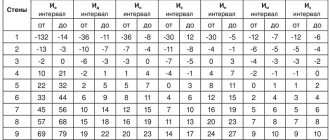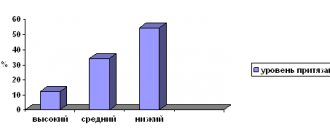Emotional instability or neuroticism is a human character trait accompanied by increased anxiety, lack of self-confidence and constant feelings of guilt. Neuroticism and neurosis are two different conditions, however, ultimately, a personality trait can turn into a persistent neurotic reaction, which must be treated with medications. Neurotic syndrome in children, unfortunately, occurs as often as in adults, which is associated with a number of factors, including genetic predisposition.
Neurotics are extremely vulnerable people. One can say about them the well-known “they take everything too close to their heart.” Such people are not ready for stressful situations at the subconscious level; any remark or criticism addressed to them is perceived as a catastrophe on a global scale. A surge of emotions in response to an irritating factor can cause short-term relief, while after some time a feeling of guilt for what has been done appears. Freud believed that every neurotic reaction is a conflict between the I (a real set of circumstances) and the Id (the subconscious). If a person wants something, but does not receive anything worthwhile in return, a kind of “split” of personality occurs. Unlike psychiatric spectrum disorders, neuroticism does not suffer from criticism of one’s own condition. Often people themselves turn to doctors for help in order to start living a full life. Improperly treated neurosis or complete ignorance of the symptoms of the disease can lead to the development of mental disorders, in particular depression.
Neuroticism and psychology
- Neuroses and neurotic states, according to Freud, are caused by a conflict between the subconscious and reality. Many of his works raise the topic of satisfying carnal needs. Without receiving a kind of “release,” a person becomes irritable and unsure of himself.
- Neuroticism according to Eysenck is a predisposition to such behavior due to heredity. Moreover, depending on the state of the central nervous system, one can say in what profession a particular person will work, whether he will commit illegal actions, and much more.
- Alfred Adler believed that neurotic reactions are the suppression of social and biological needs, the desire for dominance. To some extent, his works are similar to Freud's theory.
- Fritz Perls was sure that neuroticism is the denial of social stereotypes and the suppression of one’s own emotions and desires.
- Karen Horney conducted research on neurotic reactions in women. Karen suggested that many women feel depressed because men are in a dominant position in society. The dominance inherent in man by nature came to naught, which caused the progression of neuroticism up to the formation of neurosis.
RELATED MATERIALS: Why aggression appears in women
Research on the topic
The nature and causes of the development of neuroticism have been and are the subject of study by many psychiatrists, psychotherapists and psychologists.
The greatest contributions to the study of neuroticism were made by Sigmund Freud, Hans Eysenck, Alfred Adler, Fritz Perls, Karen Horney. Each theory has common features and some differences:
- Among the reasons for the development of neuroticism, Freud named the limitation of human natural desires that bring pleasure and release (sex and aggression). The suppression of such natural inclinations may be due to education and social condemnation. With visible external well-being, a person has great discomfort inside and this leads to the development of neuroticism. A person’s internal experiences come first; he feels dissatisfied and unhappy, this affects relationships with others.
- Hans Eysenck called neuroticism one of the personality dimensions along with psychoticism and extaversion-introversion. He believed that these personality dimensions are genetically determined by the activity of the central nervous system. In his research, he cited the relationship between these factors and the tendency to crime, mental illness, and accidents. He established a relationship with the choice of profession, achievements in sports, and sexual preferences.
- Alfred Adler believed that neuroticism appears as a result of the suppression of social needs along with biological ones. One of these social needs is the desire for dominance, which encounters resistance in childhood and adulthood. The emerging feeling of one's own weakness is transformed into an inferiority complex. Ambitious people who strive for leadership and dominance perceive this quite painfully. The individual begins to show vulnerability and aggression, resistance to failure decreases, and the person begins to humiliate others. These causes and manifestations result in a constant internal imbalance.
- Fritz Perls considered the main reason for the emergence of neuroticism to be the limitation of the individual by social conventions. The imposition of behavioral stereotypes by society and the suppression of one’s own desires leads to emotional overstrain, which in turn leads to an emotional explosion, a violation of mental stability, and leads to the destruction of a person’s personality and social life.
- Karen Horney has been researching neuroticism in women. Her research showed that the cause of development is the suppression of female individuality in the modern world, where the dominant role belongs to men. Women's emotional instability, mood swings, and self-esteem are caused by the need to participate in competition, to meet the conditions set by men, which creates stressful situations.
Eysenck circle
Clinical picture
There are a number of complaints that a person with a neurotic personality can make:
- Fatigue;
- Feelings of guilt that grow over time;
- Constant anxiety;
- Tremor;
- Low self-esteem;
- Tendency to overvalued ideas (a person is obsessed with only one idea, and cannot think about anything else besides it);
- Feeling of own inferiority;
- Inappropriate reaction to external stimuli (for example, shouting at a minor remark or tearfulness for no apparent reason);
- Somatic complaints (headache, inability to sleep, nausea, palpitations, etc.).
In some cases, neurotic edema and skin rashes of non-allergic origin may form due to increased histamine production in response to stress.
Neurotic symptoms must be differentiated from other complaints that may be the result of an existing disease.
Symptoms
Neuroticism affects emotionally unstable people with a weak psyche, who are called “neurotics.” They are constantly excited, they are haunted by a feeling of anxiety and even fear. They are characterized by a tendency to develop phobias; there may be an inferiority complex , low self-esteem, and feelings of guilt. The actions they commit may be completely inadequate and devoid of any meaning. Also, in addition to all this, many somatic complaints arise: insomnia, various digestive problems, headaches.
Neuroticism as a consequence of brain characteristics
Eysenck believed that neuroticism is directly related to the activity of the limbic system and the production of the hormone serotonin. Persons with a neurotic character have it in greater quantities, which is the initiator of the onset of symptoms.
The main condition for the emergence of neuroticism is the genetic component. Moreover, in such people there is a pronounced predominance of the sympathetic department of the autonomic nervous system over the parasympathetic.
Causes
The condition in question occurs when a person’s internal needs are not taken into account and are not satisfied. We are talking here not only about food, water, sex, but also about social “needs”. For example, about the desire to dominate. Some people feel more successful when they have power over others. The reasons for such “delusions” of grandeur must be sought in childhood - as a rule, the opinions of such children were not taken into account, and a different point of view was imposed.
Relatives usually perceive their relative or friend as an extremely excitable and emotional person, but they do not even realize that this is a psychological problem.
The role of brain neurotrophic factor
A low level of neurotropic factors can be the culprit of depressive states in neurotics. And a long stay in a stressful situation causes a breakdown of a person’s defense mechanisms, which is manifested by hormonal shifts due to the malfunction of the hypothalamic-pituitary-adrenaline system. In response to an irritant, a large amount of cortisol is produced, causing not only emotional instability, but also disruption of a number of organs and systems (palpitations, nausea, lump in the throat, etc.).
Personality typology
According to Eysenck
Drawing on data from the physiology of higher nervous activity, Eysenck hypothesizes that strong and weak types, according to Pavlov, are very close to extroverted and introverted personality types. The nature of introversion and extraversion is seen in the innate properties of the central nervous system, which ensure the balance of the processes of excitation and inhibition.
Thus, using survey data on the scales of extraversion, introversion and neuroticism, it is possible to derive indicators of personality temperament according to the classification of Pavlov, who described four classical types: sanguine (according to the basic properties of the central nervous system is characterized as strong, balanced, mobile), choleric (strong, unbalanced, mobile), phlegmatic (strong, balanced, inert), melancholic (weak, unbalanced, inert).
"Pure" sanguine person
quickly adapts to new conditions, quickly gets along with people, and is sociable. Feelings arise and change easily, emotional experiences are usually shallow. Facial expressions are rich, mobile, expressive. He is somewhat restless, needs new impressions, does not sufficiently regulate his impulses, and does not know how to strictly adhere to the established routine, life, or work system. In this regard, he cannot successfully carry out work that requires an equal expenditure of effort, prolonged and methodical tension, perseverance, stability of attention, and patience. In the absence of serious goals, deep thoughts, and creative activity, superficiality and inconstancy are developed.
Choleric
characterized by increased excitability, actions are intermittent. He is characterized by sharpness and swiftness of movements, strength, impulsiveness, and vivid expression of emotional experiences. Due to imbalance, carried away by a task, he tends to act with all his might and become more exhausted than he should. Having public interests, his temperament shows initiative, energy, and integrity. In the absence of spiritual life, choleric temperament often manifests itself in irritability, efficiency, lack of restraint, hot temper, and inability to self-control under emotional circumstances.
Phlegmatic person
characterized by a relatively low level of behavioral activity, new forms of which are developed slowly but are persistent. Possesses slowness and calmness in actions, facial expressions and speech, evenness, constancy, depth of feelings and moods. A persistent and persistent “worker of life”, he rarely loses his temper, is not prone to emotions, having calculated his strength, gets things done to the end, is even in relationships, moderately sociable, and does not like to chat in vain. Saves energy and doesn’t waste it. Depending on the conditions, in some cases a phlegmatic person may be characterized by “positive” traits - endurance, depth of thoughts, constancy, thoroughness, etc., in others - lethargy, indifference to the environment, laziness and lack of will, poverty and weakness of emotions, a tendency to perform just habitual actions.
Melancholic.
His reaction often does not correspond to the strength of the stimulus; there is depth and stability of feelings with weak expression. It is difficult for him to concentrate on something for a long time. Strong influences often cause a prolonged inhibitory reaction in a melancholic person (give up). He is characterized by restraint and subdued motor skills and speech, shyness, timidity, and indecisiveness. Under normal conditions, a melancholic person is a deep, meaningful person who can be a good worker and successfully cope with life’s tasks. Under unfavorable conditions, he can turn into a closed, fearful, anxious, vulnerable person, prone to difficult internal experiences of life circumstances that do not deserve it at all.
According to Sukhodolsky
On the other hand, as a rule, one should talk about the predominance of certain temperamental traits, since in life they are rarely found in their pure form. That is why G.V. Sukhodolsky believes that it is necessary to distinguish not four (“pure” types - this is an abstraction), but nine personality types: the norm and eight accentuations. In addition to the four “pure” types G.V. Sukhodolsky proposed four “intermediate” ones:
- choleric-sanguine (i.e. “pure” extroverted in combination with an average score of neuroticism)
- sanguine-phlegmatic, (i.e. “stable” type combined with extraversion-introversion ambivalence)
- phlegmatic-melancholic, (i.e. “pure” introverted in combination with an average neuroticism score)
- melancholic-choleric, (i.e. “neurotic” type combined with extraversion-introversion ambivalence)
- normal type.
According to G.V. Sukhodolsky, the typology of G. Eysenck, can be represented in the form of a matrix, the rows of which characterize the orientation (introversion; average values; extraversion), the columns correspond to the levels of emotional stability (neuroticism; average values; stability), and the elements - statistically normal and deviating types .
Each personality type corresponds to the following external manifestations:
- Choleric (X)
– aggressive, hot-tempered, changing his views/impulsive. - Choleric-sanguine (CS) type
– optimistic, active, extroverted, sociable, accessible. - Sanguine (S)
– talkative, quick to react, relaxed, lively. - Sanguine-phlegmatic (SP) type
– carefree, leading, stable, calm, balanced. - Phlegmatic (F)
– reliable, self-controlled, peaceful, reasonable. - The phlegmatic-melancholic (FM) type
is diligent, passive, introverted, quiet, uncommunicative. - Melancholic (M)
– reserved, pessimistic, sober, rigid. - Melancholic-choleric (MX) type
– conscientious, capricious, neurotic, touchy, restless. - Normal type (N)
.
Diagnostics
There is a so-called neuroticism test. It includes 24 questions that must be answered “Yes” or “No”. Up to 11 positive answers are considered the normal limit, more than 12 is already confirmation of the presence of a neurotic condition. A high level of neuroticism is when the answer to most of the questions asked was “yes.”
The Eysenck test will be able to better convey a person’s internal experiences and preferences. The test contains 57 questions that will help determine your temperament and stress resistance. Neuroticism and extraversion are the most common combination, which is important when adjusting the psycho-emotional background.
PsyAndNeuro.ru
Neuroticism is a personality trait that predisposes people to experience negative emotions, including anger, anxiety, shyness, irritability, emotional instability, and depression [1]. Individuals with a high level of neuroticism react poorly to stressful environmental influences, interpret ordinary situations as threatening, and may experience small frustrating conditions as hopelessly insurmountable. Neuroticism is one of the most well-known and empirically supported personality traits, with a significant body of research indicating its heritability, the presence of precursors in childhood, temporal stability throughout the life cycle, and widespread distribution [1,2].
Neuroticism has a huge impact on public health [3]. It provides vulnerability to a wide range of different forms of psychopathology, including anxiety disorders, mood disorders, chemical dependencies, somatic symptoms and eating disorders [1,4]. Many substance use cases represent attempts to suppress or eliminate the sadness, anxiety, dysphoria, and emotional instability that have arisen due to neuroticism. Clinically significant episodes of anxiety and depressive mood will often represent an interaction between neuroticism as a personality trait or temperament and life stressors [1].
Neuroticism is commensurately associated with a range of physical disorders, such as heart problems, immune system disorders, asthma, atopic eczema, irritable bowel syndrome, and even an increased risk of death [2]. The relationship between neuroticism and physical problems is both direct and indirect, due to the fact that neuroticism provides vulnerability to the development of these conditions, as well as exaggeration of their significance and ineffective responses to their treatment.
Neuroticism is also associated with decreased quality of life, including hostility, excessive worry, and professional and marital dissatisfaction [5]. High levels of neuroticism will contribute to poor work performance due to emotional preoccupation, exhaustion, and distraction. Analogous to the dual effects of neuroticism on physical conditions, high levels of neuroticism will lead not only to actual deterioration of the marital relationship, but also to subjective feelings of marital dissatisfaction, even when there is no objective basis for such feelings, which, in turn, can lead to real disappointment and departure of a spouse.
Given the contribution of neuroticism to so many negative life outcomes, screening for clinically significant levels of neuroticism in the general population has been recommended during routine medical visits [1,6]. Screening in the absence of available treatment would be problematic. However, neuroticism responds to pharmacological interventions [1]. Pharmacotherapy can effectively reduce the level of neuroticism as a personality trait. Barlow et al [7] also developed an empirically supported cognitive-behavioral approach to treating neuroticism called the Unified Protocol (UP). They proposed that current psychological therapies have become overly specialized and focus on symptoms specific to a particular disorder. UP was intended to be transdiagnostic. Recognizing the impact of neuroticism on a variety of physical and mental health problems, the UP authors again note that “the public health implications of directly treating and even preventing the development of neuroticism would be significant” [7].
The concept of neuroticism has been highlighted for a long time since the beginning of basic scientific research on personality, and it may even be the first personality domain to be identified within the framework of psychology [1]. Given its central importance to so many different forms of mental and physical pathology, it is not surprising that the presence of neuroticism is evident in most models of personality, personality disorders, and psychopathology.
Neuroticism is one of the main general personality areas included in the five-factor model or “Big Five” [2]. It is also considered within the dimensional trait model included in Section III of the DSM-5 for prospective measures and models [8]. This model consists of five broad domains, including negative affectivity (along with indifference, psychoticism, hostility, and disinhibition). As it was about [8].
In addition, neuroticism is also included in the negative affectivity domain included in the dimensional model of character traits in personality disorder proposed for ICD-11 [9]. Finally, it is also evident within the National Institute of Mental Health's transdiagnostic Research Domain Criteria (RDoC), as the negative valence of RDoC includes constructs such as fear, distress, frustration, and perceived loss [10]. It would be incorrect to assume that the negative valence of RDoC is equivalent to neuroticism, but it is clear that the two are closely related.
There is currently considerable interest in common factors in psychopathology, personality disorder, and personality in general. To the extent that the degree of distress and dysfunction (which is largely determined by general factors) is associated with the levels of distress and despondency that are likely to occur, we hypothesize that neuroticism could explain a significant proportion of the variance in these general factors.
In summary, neuroticism is a fundamental personality domain that has a profound impact on public health, with implications for a wide range of psychopathological and physical health problems. It contributes to many significant harmful life outcomes and also limits people's ability to address them appropriately. It has long been recognized as one of the most important and significant domains of personality and is increasingly recognized as a fundamental feature of personality disorder and psychopathology in general.
Translation into Russian was organized by the Council of Young Scientists of the Russian Society of Psychiatrists with the support of the World Psychiatric Association.
Source: Thomas A. Widiger, Joshua R. Oltmanns. Neuroticism is a fundamental domain of personality with enormous public health implications. World Psychiatry. 2020 Jun; 16(2): 144–145. Published online 2020 May 12. doi: 10.1002/wps.2041. Translation: Shunenkov D.A. (Ivanovo). Editing: Ph.D. Korneva M.Yu. (Moscow)
Bibliography:
1. Widiger TA. In: Leary MR, Hoyle RH (eds). Handbook of individual differences in social behavior. New York: Guilford, 2009:129-46. 2. Tackett JL, Lahey BB. In: Widiger TA (ed). The Oxford handbook of the five factor model. New York: Oxford University Press (in press). 3. Lahey BB. Am Psychol 2009;64:241-56. 4. Bagby RM, Uliaszek AA, Gralnick TM et al. In: Widiger TA (ed). The Oxford handbook of the five factor model. New York: Oxford University Press (in press). 5. Ozer DJ, Benet-Martinez V. Annu Rev Psychol 2006;57:401-21. 6. Widiger TA, Trull TJ. Am Psychol 2007;62:71-83. 7. Barlow DH, Sauer-Zavala S, Carl JR et al. Clin Psychol Sci 2014;2:344-65. 8. American Psychiatric Association. Diagnostic and statistical manual of mental disorders, 5th ed. Arlington: American Psychiatric Association, 2013. 9. Tyrer P, Reed GM, Crawford MJ. Lancet 2015;385:717-26. 10. Sanislow CA, Pine DS, Quinn KJ et al. J Abnorm Psychol 2010;119:631-9.
Eysenck test
The level of neuroticism can be calculated using a special scale, which will assess the mental well-being of the person being studied.
Eysenck identified three categories of people:
- Extrovert. A person whose energy is directed outward. Such people are sociable, impulsive, cannot tolerate monotonous work, get irritated very quickly and strive for leadership;
- An introvert is the complete opposite of an extrovert. He is shy, does not like to take risks and does not adapt well to his environment. An introvert is able to keep his emotions to himself, feels uncomfortable among a large number of people, but behaves friendly and openly;
- A neurotic is a person who is always in the realm of chaos. He is overly excitable, like an extrovert, and often gets agitated in large crowds, like an introvert. Constant mental stress often leads to depression.
RELATED MATERIALS: How to control your anger - advice from an experienced psychologist
The Neuroticism Scale is a personality assessment based on a test that includes 57 questions. The ratio of “Yes”\”No” answers and analysis of the data obtained allows us to reveal a person and find his weaknesses and strengths.
High neuroticism and ways to stabilize the emotional state
Neuroticism as a personality component is not a problem. It does not require adjustment. But in cases where relationships with loved ones suffer, emotions become negative, it is necessary to take action.
- Working with a psychologist is one of the first and most important stages in working with your emotional state. The specialist has the knowledge of how to reduce anxiety, identify related problems, explain the points that are worth working on and those that are the norm.
- Drugs to normalize blood circulation in the brain and vitamins are often necessary as a preventive measure. They make emotions stable. A person's performance improves. Their appointments should be made by specialists with skills in the field of psychology and neurology.
- Sport is a source of serotonin production and good mood. A person who goes in for sports is more active and cheerful. He is in good physical shape, which increases his self-esteem.
- Relaxation practices can be used to regulate emotions. You can meditate or listen to soothing music anywhere. It is convenient to use breathing techniques or influence special points of the body.
- Calmness and understanding in the family give a person a feeling of stability and confidence. We spend a significant part of our time surrounded by loved ones and want to feel comfortable.
All people react in a special way to external stimuli, to life circumstances and situations. Correct understanding of your states, working with moments that do not suit you, can become sources of peace and well-being.
Temperament types
Based on this test, the following types of temperaments are distinguished:
- Choleric. This is an extrovert with increased emotional lability. Despite his aggressiveness and irritability, he is an optimist;
- Sanguine. Also an extrovert, however, there are no mood swings. Such a person is cheerful and sociable. Solves any problems without much energy expenditure;
- Melancholic. Introverted, but emotionally unstable. He is pessimistic and is the complete opposite of a choleric. They react passively to a stressful stimulus, tearfulness is noted;
- Phlegmatic person. Also an introvert, but with a stable emotional background. He is stable, peaceful, unhurried. He reacts weakly to failures, “doesn’t want to waste his nerves on it.”
It should be noted that temperaments never occur in their pure form. In modern society there are many variations; with the help of the Eysenck test, only the dominant component can be identified.
Eysenck scale
The British psychologist Hans Jurgen Eysenck was involved in determining the severity of neuroticism. He put forward extra-introversion and psychoticism as essential components of personality.
Extraversion is an outward orientation, high initiative and sociability with low assertiveness. Introversion manifests itself as social passivity, isolation, immersion in the world of internal experiences. Neuroticism is, according to Eysenck, instability in extreme situations.
Psychotism is a secondary personality trait, characterized by a wealth of imagination, subjectivism, egocentrism, and conflict. Scientists did not take psychoticism into account when describing temperament. He used only two variables: neuroticism and extra-introversion. Thus, a choleric person, according to his theory, has a high level of neuroticism and extraversion.
Important! In the human population, pure types of temperaments are extremely rare. Much more often, mental parameters on the scale of neuroticism and extra-introversion take values close to zero, creating the so-called transitional types.
The degree of expression of certain traits can be seen on Eysenck’s “circle”. The neuroticism scale records emotional-volitional stability or affective excitability, extra-introversion - the focus of mental activity (on external or internal reality).
Eysenck circle
The Eysenck Neuroticism Scale, known in scientific circles, is still used to determine the psychological type and character traits of any individual. Special tests developed by a psychologist allow you to determine a person’s psychotype using ordinary simple questions. The test makes it possible to identify the characteristic behavior of an individual in everyday and stressful situations.









